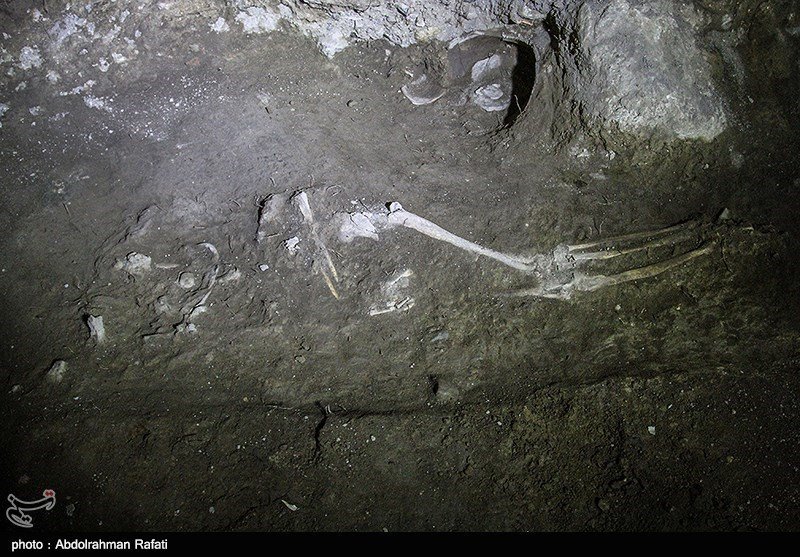Iron-Age skeleton, objects unearthed in Gilan

TEHRAN – A human skeleton and objects, dating from the Iron Age, have recently been unearthed from an ancient graveyard in Rostamabad, Gilan province, northern Iran.
A team of Iranian archaeologists has discovered some tomb chambers, one of which contained a human skeleton, a sword and pottery vessels full of animal bones, which may refer to food offering to the deceased person, Tasnim reported on Tuesday.
The skeleton belongs to a male about forty years old, with a height between 160 and 167 centimeters, according to Sara Khalifeh Soltani, a bioarchaeologist from Boston University.
Shahram Ramin, who heads the excavation, says that several other tombs have also been yielded the same pre-historical objects, which are about 3000 years old.
In addition to the Iron Age graves, a number of stone tools have been discovered in a deeper depth, which, according to preliminary examination by archaeologists at the National Museum of Iran, probably date back to Epipaleolithic period, about 12 thousand years old.
The area where the graves were found is located along a highway, close to a newly constructed petrol station. The site was at risk of destruction due to the implementation of a development project.
According to the report, the site probably belonged to a group of people who immigrated into the Iranian plateau from Central Asia in early to mid-2nd millennium BC. The abundance of arms, horse-trappings (as well as horse burials), and spouted vessels among the grave goods are characteristics of this ancient culture.
Gilan is well-known for its rich Iron Age cemeteries such as Marlik that have been excavated over the past century.
AFM/MQ/MG
